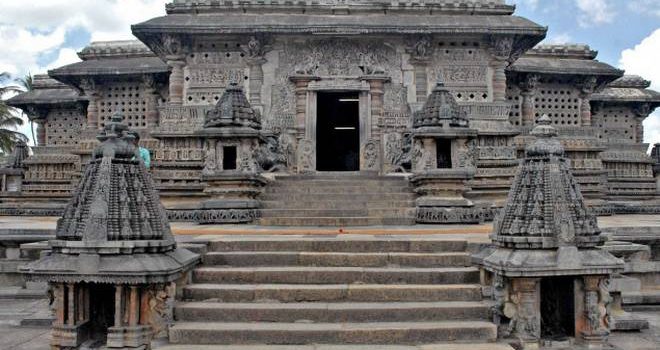History and culture of chikmagalur
History of Chikmagalur district is a rather rich one, as seen in the remnants of Hoysala architecture
strewn in the land. There is a history in the way the district got its name itself. Chikmagalur district gets its name from its headquarters of Chikkamagaluru city.
The term Chikamagalur literally means “The town of the younger daughter” in the native Kannada language. The town is said to have been sent as a dowry to the younger daughter of Rukmangada, the legendary chief of Sakrepatna and hence the name. In fact, it must be stated here that located just 5 kilometres from Chikamagalur city is a town called Hiremagaluru which means “The town of the elder daughter”.
The region of Chikamagalur is the place where the rulers of the Hoysala Empire started and spent the early days of their dynasty. Legend has it that the legendary tiger which has been immortalised in the Hoysala crest was killed by the founder of the Hoysala dynasty at Sosevur, now identified with Angadi in Mudigere Taluk. However, this remains a disputed fact among historians as they have found a lot of inconsistencies in the story which they term as folklore. It is known for a fact however that Veera Ballala II, the great king of Hoysala Empire, has built the Amriteshwara temple at Amrithapura in Tarikere Taluk.
One of the most significant events in the history of Chikmagalur district is that coffee was introduced for the first time in India through the Chikmagalur district. The first coffee crop was grown in the Baba Budan Giri Hills in 1670 A.D. It is believed that the saint Baba Budan, on his pilgrimage to Mecca, happened to travel through the seaport of Mocha, Yemen. It is here that he discovered coffee for the first time and brought it back to India. In order to do this, he wrapped seven coffee beans around his belly and brought it out of Arabia back to India. When he returned home, he planted the beans in the hills of Chikkamagaluru, which are now named Baba Budan Hills in his honour. In recent history, Chikkamagaluru was the centre of global attention in the year 1978 when the former Indian Prime Minister, Indira Gandhi stood for elections here and got elected to Lok Sabha, the Indian Parliament.
The past history of Chikmagalur district is still seen carried forward in the various monuments that the various ruling dynasties have bestowed on the land. One of the greatest centres of education, trade and commerce, Chikmagalur has venerated monuments of all religions- Kodandarama temple a synthesis of Hoysala and Dravidian styles of architecture, Jamia Mosque and the new St. Joseph’s Cathedral with an attractive shell shaped portico, are among the many historical remnants found in the district. History of Chikmagalur district is a rather rich one, as seen in the remnants of Hoysala architecture strewn in the land. There is a history in the way the district got its name itself. Chikmagalur district gets its name from its headquarters of Chikkamagaluru city.
The term Chikamagalur literally means “The town of the younger daughter” in the native Kannada language. The town is said to have been sent as a dowry to the younger daughter of Rukmangada, the legendary chief of Sakrepatna and hence the name. In fact, it must be stated here that located just 5 kilometres from Chikamagalur city is a town called Hiremagaluru which means “The town of the elder daughter”.
The region of Chikamagalur is the place where the rulers of the Hoysala Empire started and spent the early days of their dynasty. Legend has it that the legendary tiger which has been immortalised in the Hoysala crest was killed by the founder of the Hoysala dynasty at Sosevur, now identified with Angadi in Mudigere Taluk. However, this remains a disputed fact among historians as they have found a lot of inconsistencies in the story which they term as folklore. It is known for a fact however that Veera Ballala II, the great king of Hoysala Empire, has built the Amriteshwara temple at Amrithapura in Tarikere Taluk.
One of the most significant events in the history of Chikmagalur district is that coffee was introduced for the first time in India through the Chikmagalur district. The first coffee crop was grown in the Baba Budan Giri Hills in 1670 A.D. It is believed that the saint Baba Budan, on his pilgrimage to Mecca, happened to travel through the seaport of Mocha, Yemen. It is here that he discovered coffee for the first time and brought it back to India. In order to do this, he wrapped seven coffee beans around his belly and brought it out of Arabia back to India. When he returned home, he planted the beans in the hills of Chikkamagaluru, which are now named Baba Budan Hills in his honour. In recent history, Chikkamagaluru was the centre of global attention in the year 1978 when the former Indian Prime Minister, Indira Gandhi stood for elections here and got elected to Lok Sabha, the Indian Parliament.
The past history of Chikmagalur district is still seen carried forward in the various monuments that the various ruling dynasties have bestowed on the land. One of the greatest centres of education, trade and commerce, Chikmagalur has venerated monuments of all religions- Kodandarama temple a synthesis of Hoysala and Dravidian styles of architecture, Jamia Mosque and the new St. Joseph’s Cathedral with an attractive shell shaped portico, are among the many historical remnants found in the district.
Festivals In Chikmagalur
Kailash Fair : It is a major fair celebrated in honour of Lord Shiva who is believed to have appeared here in the form of a stone Lingam. Diwali: Diwali is the festival of light. It is popularly celebrated here.

















